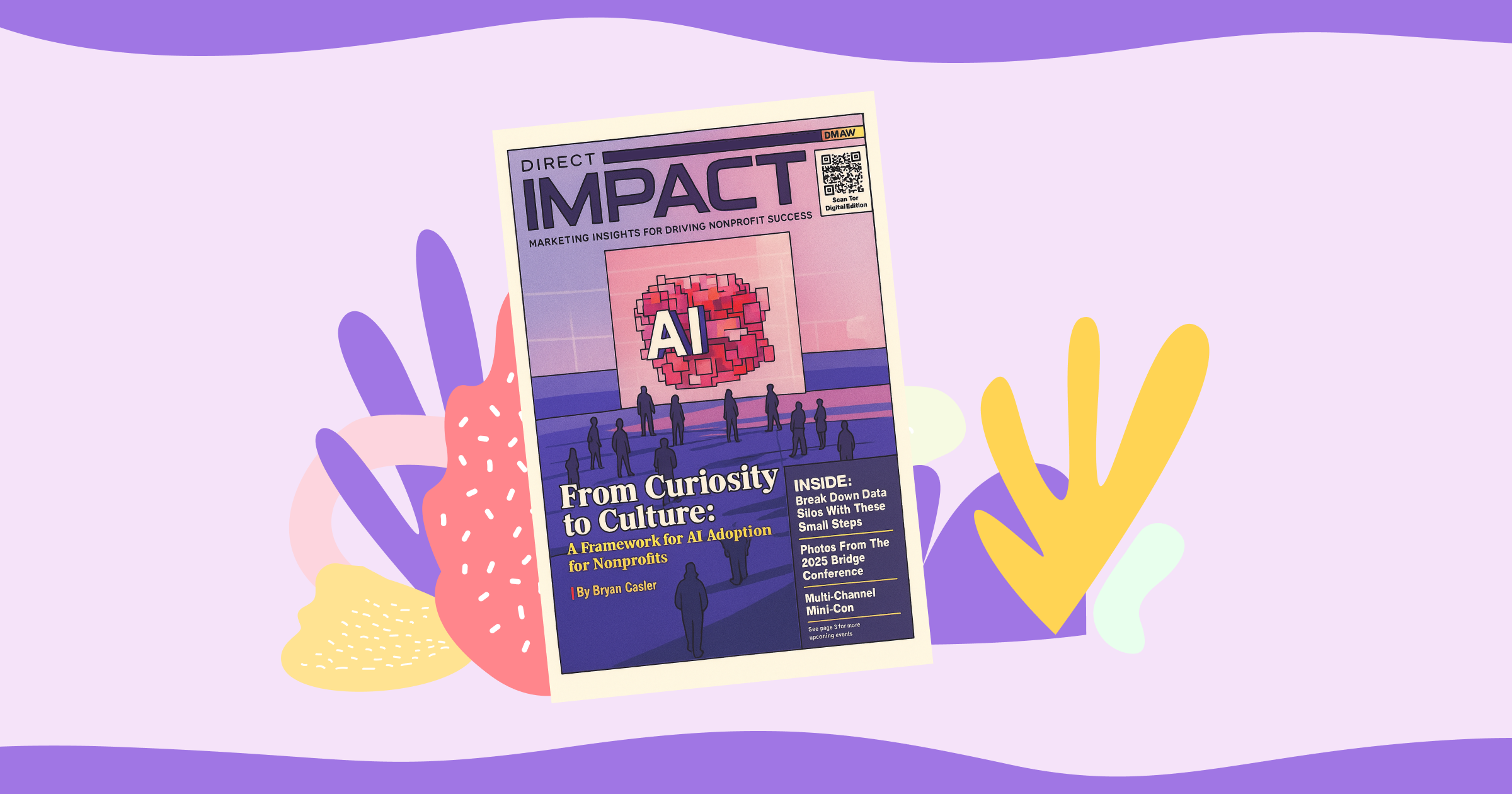How can we help?


The Engagement 4Cast

This article was originally published in the September/October 2025 edition of Direct Marketing Association of Washington (DMAW)‘s Direct Impact magazine.
Like many of you, we at 4Site Studios have been grappling with how to make sense of AI. Not in the abstract, not in some future-scenario workshop, but right now in our day-to-day lives and work.
We keep hearing the same thing from peers at nonprofits and the agencies that support them: a sense of uncertainty, a bit of fear, and one big question—how do we adopt this responsibly, and where do we even start?
Some teams have experimented with ChatGPT and used AI to write email subject lines or draft campaign copy, but deeper understanding and adoption is lagging. Others are hesitant, waiting for a formal policy or a perfect use case to emerge. But here’s the truth: no policy will make your team comfortable with AI. No deck will demystify it. We’re on the frontier now. As leaders, we’re not waiting for a map, we’re drawing it.
AI is powerful, potentially dangerous, and fundamentally transformative. To harness it effectively, we have to understand it. Not abstractly, but intimately. The team that waits for permission to explore how AI can be applied to their work, or who are using it in the dark, will get burned. The sooner your team starts to use it out in the open, the sooner they will understand the opportunities, the risks, and the ways to shape it to your organization’s values. No one becomes AI literate by reading a policy. They learn by doing.
At 4Site, to build that culture we didn’t mandate AI adoption. Instead, we created space for experimentation. Over a year ago I offered to personally reimburse any staff member up to $100/month for them to go and use any AI tool, no questions asked, no requirements. Over time, we began sharing our best tips, hard lessons learned, and the questions we were still grappling with; this is the reason our sarcastically named “#ai-underlords” Slack channel has become our most active.
Together, we discovered which models gave the best results, what “prompt engineering” was helpful and which were AI theater. We developed a collective AI literacy not from taking courses, but from achieving many small victories and frustrating failures, together and in the open.
For one client focused on ending the drug addiction crisis in America, they offer memorial pages that anyone can create in memory of a loved one. Unfortunately, some of the submissions are not in good faith. Due to the nature of the subject matter we can’t flag submissions for moderation based on keyword analysis alone, but with AI we can perform “sentiment analysis” and help flag submissions that likely straddle or have crossed the line.
Our inclusive and collaborative culture allowed for and promoted curiosity and that’s where the real transformation started. We are now able to effectively utilize AI in our daily workflows and even in our client strategies and web development. It’s allowing us to build solutions and find efficiencies that were previously impossible.
Let me be clear: I’m not against acceptable use policies or AI governance. In fact, as organizations scale their use of AI, policies will be essential and in July we formalized our own. A good AI policy encourages experimentation by clearly showing what’s allowed, not just what’s off-limits.
But I also believe that when it comes to navigating this urgent threat and the bountiful opportunity of AI: culture precedes policy. If your team doesn’t feel comfortable using AI (or sharing that they’re using AI), a policy won’t change that. If there’s fear, shame, or a desire for perfectionism around these tools, adoption will be superficial and inadequate.
4Site’s team was able to build AI literacy because we were allowed to be vulnerable with each other and fail. No one was penalized for experimenting. No one was shamed for sharing imperfect outputs (though, there have been good natured ribbings, like when a colleague’s email begins with the AI-tell, “I hope this email finds you well…” or has five em dashes). We have all been learning to ride this bike together and have the collective scraped knees and elbows to prove it.
If you’re a leader thinking about AI, ask yourself this: Have I created a space where my team can play? Do they know that experimentation is safe, and curiosity is encouraged? If not, that’s the first policy you need to implement and it might need to start with you taking the first step.
At 4Site, our team has adopted the following framework:
At this final stage, AI isn’t just a productivity booster. It becomes a creative enabler, helping your team stretch into new capabilities, new offerings, and new ways of thinking.
If you’re wondering what to do next, here’s my advice: start using AI yourself, and do it in the open. Share your prompts. Talk about your failures. Show your team that it’s not about perfection. It’s about curiosity and exploration. Then invite them to do the same.
If the nonprofits in our sector are going to take advantage of the promise of AI, and if they are going to mitigate its dangers, nonprofit leaders will need to model curiosity, transparency, and responsibility. That’s how you normalize adoption. That’s how you build trust. And that’s how you build real organizational literacy. Not because someone asked for it, but because everyone started living it.
So yes, build your policy, but build your culture first. Model the behavior. Use AI in the open. Encourage play. Make curiosity the standard. That’s how trust grows, and how real literacy takes root.

4Site Studios is a talented troupe of web professionals who are passionate about creating tools to support digital marketers. We love to hear from our community! Reach out to us with your thoughts and questions. And don’t forget to subscribe below to get notified when we post new blogs – no spam, just content👍🏼

